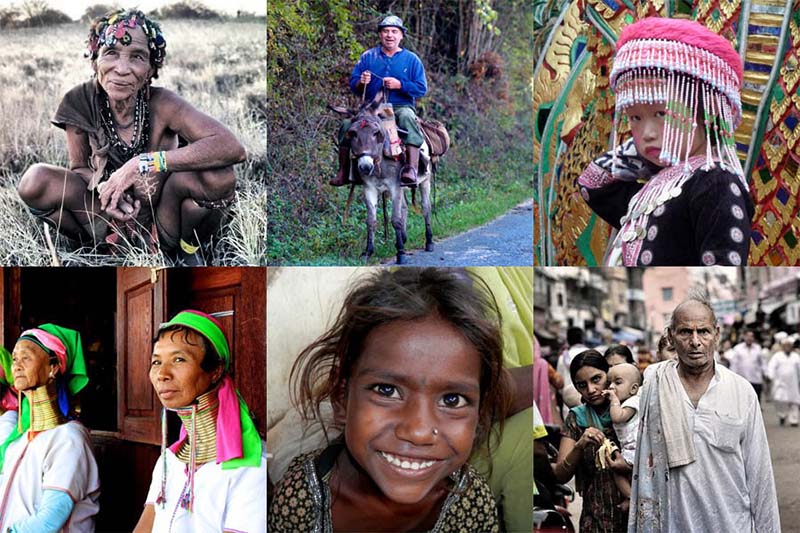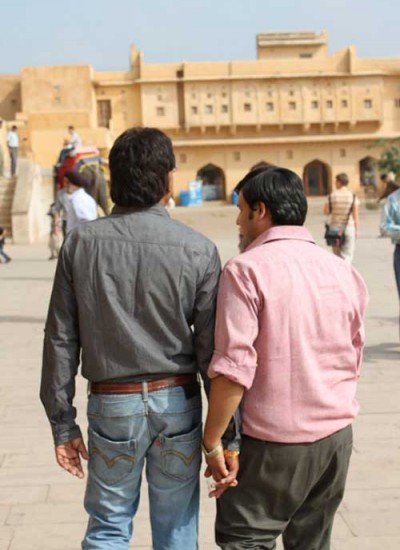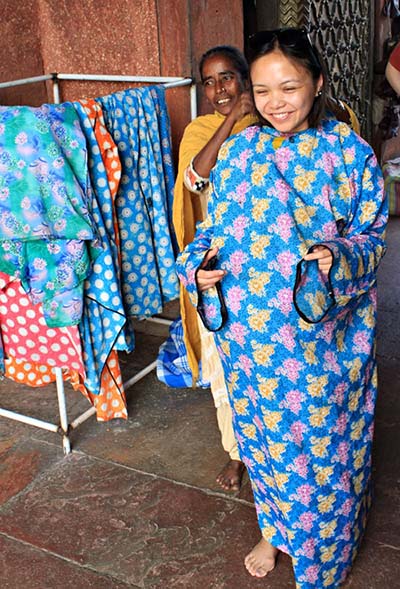Dealing With Different Customs & Cultures
Dealing With Different Customs & Cultures
The world is a funny place, and before you get us wrong that is a grand thing! Just step out of your own back yard, and you are in a different realm; but step out into another country, and the sudden culture shock could leave your head spinning and slack jaw dragging the ground for days!
The great thing about the thousands of peoples around the globe, all with their own lives, religion, history, geography and languages, is that all this combined has created such an amazing array of colorful cultures and unique traditions that will keep the happy-go-lucky backpacker forever able to pick from the metaphysical box of chocolates and never get the same sample twice.
But with all these differences, it does lead to a lot of confusion, faux pas, misunderstandings and the occasional all out war! So, without further adieu, we present you with a few of the more common blunders made by travelers in the hope that you never have to see an angry mob running after you.

Americans might greet with a handshake; however, there are other greetings out there of which you should be aware. For example, in Japan, people bow, and in Italy and some Slavic countries, people kiss cheeks … and then if you are a member of the Freemasons, well, that gets too complex for us to go into in this guide.

The handshake
In parts of Northern Europe, a quick, firm handshake is the norm, but in parts of Southern Europe, Central and South America, a handshake is longer and warmer. Beware that in Turkey, a firm handshake is considered rude and aggressive, and in certain African countries, a limp handshake is normal. In Islamic countries, men should generally never shake the hands of women.
Eye contact
In the Czech Republic and parts of Germany, it is considered a lack of respect to not look each other in the eye when toasting with an alcoholic beverage … and not just the first toast, but EVERY single time you clink those glasses together! So, be prepared to know your new friends’ eye color quite well by the end of a long night out. In the United States and Canada, intermittent eye contact is extremely important in conveying interest and attention.
In many Middle Eastern cultures, intense eye contact between the same genders is often a symbol of trust and sincerity; however, between opposite genders, especially in Muslim cultures, anything more than BRIEF eye contact is considered inappropriate. Additionally, in Asian, African, and Latin American cultures, extended eye contact is considered a “challenge”. The Japanese tend to consider even brief eye contact uncomfortable. And, in some cultures, a woman should look down when talking to a man.
2. Personal Space
Where you may enjoy that bit of breathing room and having people at a distance, be aware that in countries like China, India and other locations or cities with larger populations, people will crowd you, touch you, grab you, etc. On the opposite side of the coin, coming in too close to people in Scandinavia or even the UK will make them uncomfortable and may be taken as I sign of aggression.

Touching
Did you know that in some sects of Judaism, the only woman that a man will touch in his lifetime is the woman he is married to? In Japan, Scandinavia and England, touching is less frequent. In Latino cultures, touching is encouraged. And in Thailand, NEVER touch a person’s head. This can be religiously offensive, as the head is considered the most sacred part of the body.
Holding hands
When you first set foot in Ethiopia or India, you may think you have entered a country open to homosexuality, but this is not necessarily the case, as it is common for men to hold hands, whilst in Asia, and even many Slavic countries, girls will constantly roam about with fingers interlocked.

Public displays of affection (PDA)
Sorry to say, but outside of the USA and Paris – the city of love, those sloppy, passionate, romance movie kisses in full view of others are reserved for wedding celebrations and not enjoyed on the street.
In some countries, you may even face jail time for displaying too much affection in public so be respectful and save those kisses for private.
3. Personal Hygiene
Some cultures don’t shave – their men’s faces (or woman’s legs or underarms). Some cultures never wear deodorant and others don’t bathe as frequently. You must be careful to make sure you do not offend anyone. And yes, sometimes odors that are quite odd to you might be very acceptable in another culture.
Blowing your nose & clearing your throat
Don’t be surprised to see people in Asia clearing the phlegm from their throat or nose in public places, but even then, keep your nasal noises to yourself as much as possible. Though you may see it happening doesn’t mean the average person likes it, especially around the dinner table.
Face masks
In Japan, Korea and other parts of Asia, people will wear a mask in public if they are sick so as not to infect others. This will carry over to them traveling to other parts of the world as well. Masks will also be common in cities with higher pollution levels.

Using your right hand
In places such as India, Africa, and the Middle East, a lot of food is eaten by hand at a communal table with others. In this situation, everyone is taught to use the right hand, as the left is utilized for more personal ‘grooming’ after the toilet. This carries over into greeting one another when shaking hands. Just imagine how offensive it is to offer someone your ‘dirty’ hand when saying hello!
Toilets & sanitation
In the West, we enjoy the porcelain throne for our duties, but this is a modernity and unheard of outside of hotels for foreigners in many countries. Be prepared for the hole in the ground…. or even worse! This was the way of the past (and doctors claim it is much better for the human system anyway).
Don’t fret, though! Mid- to upper-range accommodation and restaurants will keep them as clean as any Western facility and will even stock them with toilet paper! Otherwise, you will learn quickly that the bucket of water with a scoop beside the pit is what that left hand and a bit of splashing are for.
Be sure to keep some tissues and hand sanitizer handy when you are planning on being out for the day.

Also realize that people are used to different ways of learning, and this will be extremely different around the world. Chinese potty training takes place in the streets, and the Czechs have no qualms when it comes to kids (or even adults for that matter) relieving themselves wherever they must, whenever they must.
Finally, be ready to pay to use the toilet at major sites or landmarks in many parts of the world. It is always wise to carry some small change with you specifically for this reason…. and some tissues and hand sanitizer, just in case.
4. Gestures
Gestures mean different things to different people. In all seriousness, it is better to keep your gestures to yourself. If you want to give the finger to that guy that just cut you off in traffic, it might not have any effect at all if he/she is from a different culture. In fact, in some cultures, it’s used as a pointer.
The thumbs-up has all different meanings, too, and you should also be careful with the American “A-Okay” sign or putting your hands on your hips.
Thumbs and hand signals
In Western culture, a thumbs up can either be used as a sign of agreement or to get a lift whilst hitching, but in some places, like West Africa, it is viewed more as a vulgar taunt … just as the middle finger is used in other countries. Also, in Europe and other parts of the world, the sign that you wish to hitch is more of a shaking of the hand and index finger pointed downwards toward the road.

Getting someones attention
In Asia, when you want to wave the waiter over to your table, do so with your palm faced towards you, and in Ethiopia, you may be shocked at the way the locals treat servers as they would call a dog to heel, but try the same in Europe, then good luck on getting any service at all.
If you would like to learn more, we suggest this book – Rude Hand Gestures of the World: A Guide to Offending without Words.
5. How to Dress
Proper street attire
Ladies, those skimpy shorts and bikini top may work well on some beaches in Thailand or the south of France, but even a skirt that isn’t long enough to cover your calves in Aleppo, Syria will get you scorned by the more conservative women and may get you too much unwanted attention from certain men unused to seeing more flesh publicly.
Religious sites
Temples, churches, burial grounds and other religious sites can pose a problem depending on where you are. For men, when entering a Jewish synagogue or cemetery, it is customary to cover your head, even if you only have a baseball cap.
But the opposite goes in many Christian establishments, where the man should remove his hat. For women, many religious denominations prefer the hair to at least be covered with a scarf or shawl, and the Rastafarian faith won’t let you enter without a skirt.
We recommend packing a sarong whenever you travel. It has so many uses and works great for both guys and girls at religious sites.

Source: https://www.backpackertravel.org/backpacker-101/on-the-road/dealing-different-customs-cultures/ , 30 May 2018